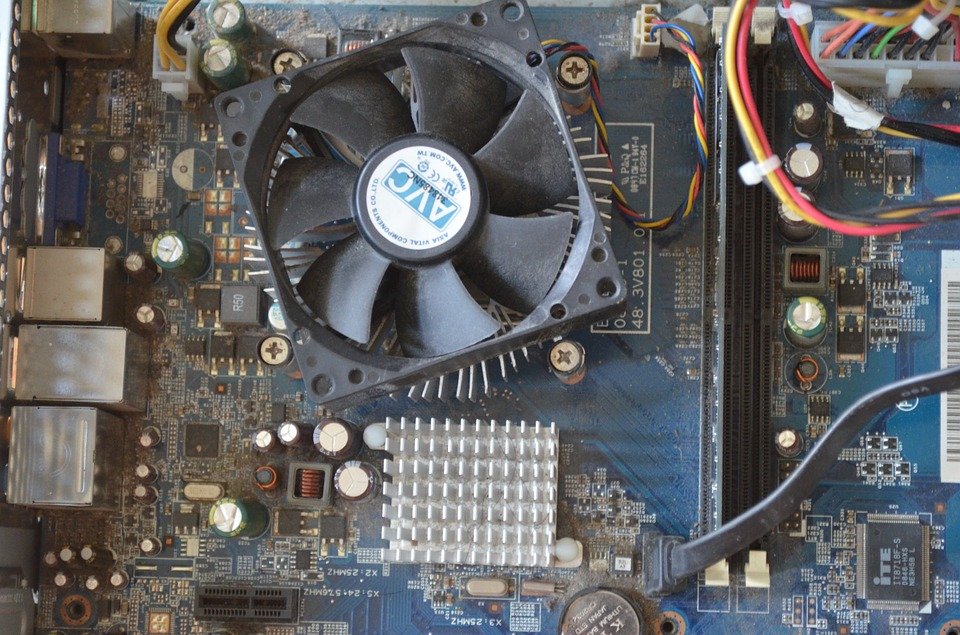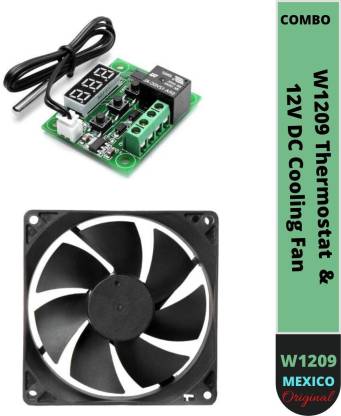The BIOS is the only ideal way to make any user-defined system adjustments. be it fan (speed) control or something. But, for whatever reason, say, you’re not, or you can’t make changes there. And you’re surprised Was wondering “how to change CPU fan speed without BIOS?”. Strongly important is keeping the CPU fan working properly – just as important is adapting to the demands of your work CPU itself is working. Because the CPU is undoubtedly working, but it’s the fan that’s really handling things. Smooth out the processor by keeping it cool and cold.
If your system is overheating, you will need to increase the fan speed to cool down your CPU. However, overheating isn’t the only reason you need fan speed control. If your fans are running at full speed for no reason, you may need to reduce the speed using one of the methods we covered in this article. See the link using CPU fan speed without bios for more details.

Methods to control cpu fan speed:
When this is the case with you, you have two ways two control your fans without BIOS. Yes, Here’s What You Can Do to Control Let us discuss these two methods to control the speed of your CPU fan and Some other methods to control cpu fan speed in below section:
- You Can Use Fan Control Software
- You Can Use External Fan Controller
Here you can see in both the ways we can change cpu fan speed without bios.
1. You Can Use Fan Control Software and Solve the Problem:
This is the first method of fan control software and solve the problem using fan control software for CPU, GPU fan optimization has always been the most recommended path. Still, the manual (from the BIOS) setting is safe, but it’s not As convenient and accurate as using this automated method. While accessing and setting up the BIOS is a lengthy and inconvenient process, They keep track of processor performance and temperature, etc., and take them effortlessly. Necessary measures when necessary. If the processor is overheating, the software will automatically. Increase the fan speed until things return to normal. And vice versa for the second case. There are many such software available. Some of the most widely known ones include For Windows “SpeedFan”, “Real Temp”, “HW Monitor”, “HWINFO”, “Notebook FanControl”, etc. OS. Whereas, for Mac OS, “iSTAT Menu” and “smcFanControl”, etc. are the most widely used languages in different software.

SpeedFan is one of the most popular fan control software, its design may look outdated to you, but it is a free software coded by an individual. Setting up the software can be complicated for beginners; that’s why we recommend you carefully follow the steps below:
- Visit this website called SpeedFan Download and Install and download SpeedFan Installer. Once downloaded, install it and then open it. After opening the application, it will scan all the buses on your motherboard.
- Configure the fan controls As soon as you open the software, it has to be configured before you can change the fan speed using the PWM controls. Now click on “Advanced”. After clicking you have to click on the “Chip” dropdown menu. In the menu, look for your PWM Once you find your PWM, select the ones you want to control.
After selecting PMW, you will see a “Set to” dropdown, you need to select “Manual” or “Software-controlled”. This will allow SpeedFan to control your fans. And click “Remember this” to save the settings. Now you can go back to the main window, and you will see PWM1, PWM2, PWM3, PWM4, PWM5. Choose the PWM you configured, and now you can manually type or use the toggle buttons to change the fan speed. - We explained in Step 2 how you can control the fan speed, but this is manual. You can also set up automatic fan control, so if your CPU starts to overheat, the SpeedFan will automatically increase the speed, and when it cools down, it will reduce the speed.
- To set up automatic fan controls You can set up automatic fan controls by clicking “Configure” and then clicking “Fan Controls” and checking Advanced Fan Controls.
2. You Can Use an External Fan Controller and Solve the Problem:
Don’t worry if the first method failed and, for whatever reason, none of the software worked. You can use the second method of fan controlling . An external controller is also, of sorts, the manual fan control method. It enables you to keep track Your computer’s temperature, etc., and manually start/stop or increase/decrease the fan functions/speed accordingly.
When going for an external controller, keep a few things in mind such as its pin socket flexibility. Commander Pro or Thermaltake Commander F6. They come with some pretty innovative features like a . provide the facility RGB LCD screen, smart sensor, multiple control knob, and warning alarm etc. to monitor temperature and other data.
With these controllers you get a complete, well known manual fan and heat.


Some other methods to control cpu fan speed without BIOS:
These two above mentioned methods are failed then you can also use other methods that control cpu fan speed. Windows 10 comes with an in-built fan control feature that you can access through the Control Panel. Come here let’s see how it works.
#Using Control Panel to Control CPU Fan Speed On:
- Open the “Control Panel” and open the “Power Options” menu in it. you will find either “Power Options” immediately in the “Control Panel” or “Hardware and Sound” menu. Or, just find it there in the search bar.
- In the new window, click “Change plan settings” and then click “Change advanced power” Adjustment. You will see a new window named “Power Options”.
- From all the different settings in that new window, scroll down to “Processor Power” Management’. Double click on it, and a new drop-down setting list will appear.
- From the drop-down list, double click on “System Cooling Policy”.
- From the new drop list, select “Activate” for both battery and plug-in. More about this source textSource text required for additional translation information Send feedback Side panels. Click “Apply” and then “Ok”. This will result in an increased fan speed.
#Method to Use Some Fan Control Software:
If the processor is overheating, the software will automatically Increase the fan speed until things return to normal. Using fan control software for CPU, GPU fan 0ptimization has always been the most recommended path. Still, manual (from BIOS) setting is safe, but it is not As convenient and accurate as using this automatic method. Where accessing and setting up the BIOS is a lengthy and inconvenient process, these software one-touch go-to methods. They keep track of the processor’s working and their temperature etc., and take it intuitively and vice versa for the second case. Some widely known fan control software – Windows and Mac for both. It can be a bit taxing for a beginner to set it up. So, here is a step-by-step guide on how to apply and get the job done. And, yes, it’s not software. Compatible with each system, therefore, be sure to check its compatibility with your system and chipset. let’s get down to how to change CPU fan speed without BIOS – with SpeedFan.
#To download/Install and Initial Set Up
- One has to look for the genuine software of SpeedFan and download it from the official website. So, download it from the official website > Install it > and let it do a Full scan of your computer/laptop.
- Once all the buses are scanned and rippled, you will see the main menu of the application showing all Your system information. Everything will happen i.e. RPM of the processor fan, temperature, CPU/GPU/Chipset details, SSD/HDD details, etc.
#Go for Automatic Fan Control Setup for solve the problem:
The previous heading was about how to manually tinker with and control your fan speeds. This
time, it’s about setting up an automatic control setup. So, here’s, bit by bit, how it’s done.
- For this, you’d again need to dive down into the “Configure” menu. Click on the “Configure”
button, and therein reach out to the “Speeds” tab. - Therein, you’d be able to define the minimum and maximum RPM of your fan.
- So, set the RPM figures down in the “Speeds” tab and then head to the “Fan Control” tab to
set up and define an optimum temperature curve for the fan. - Then, go to the “Temperatures” tab to set and define when must your processors’ fan speed up
or slow down based on CPU/GPU temperature. - Once done, from all the sensors down there in the Temperature Configuration menu, choose
the exact sensor that’s gonna control them i.e. CPU for CPU’s fan, and likewise. - Look for the two options i.e. “Desired” and “Warning”, at the bottom of the screen. And, set
both these values to your desired place.
Then, just “Apply” and “Ok”. Now, immediately when your CPU/GPU will start soaring up to that
temperature level , the fan speed will automatically increase or
decrease accordingly.
